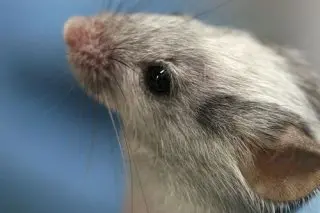美国辛辛那提大学的William Ridgway等人最近在旧金山召开的美国糖尿病年会上宣布他们在一型糖尿病小鼠模型上逆转了糖尿病进程。研究人员使用了一种名为UT18的抗体来激活TLR4受体,并最终逆转了一型糖尿病进程。不过研究人员同时也提到,这一逆转仅是在小鼠一型糖尿病刚开始阶段才能做到。相对于小鼠,人类一型糖尿病的起始阶段更长,但与整个糖尿病进程来说仍然相对较短。
一型糖尿病主要是在儿童和年轻人中出现,大概占糖尿病人群的5%,目前并没有一种有效疗法,仅能通过胰岛素疗法控制病情。研究发现一型糖尿病主要是由于自身免疫系统识别并损伤胰岛B细胞使其无法正常分泌胰岛素而致。
详细英文报道:
CINCINNATI-Investigators at the University of Cincinnati (UC) have found a therapy that reverses new onset Type 1 diabetes in mouse models and may advance efforts in combating the disease among humans. The study, led by William Ridgway, MD, was presented Saturday, June 14, 2014, at the American Diabetes Association's 74th Scientific Sessions in San Francisco.
Type 1 diabetes is usually diagnosed in children and young adults and affects about 5 percent of all people with diabetes, according to the American Diabetes Association. In Type 1 diabetes, the body does not produce sufficient insulin, which is central to glucose metabolism: without insulin, blood glucose rises.
There is no cure for Type 1 diabetes though it can be controlled with insulin therapy. Symptoms of the disease include frequent urination, excessive thirst and weight loss even though you are eating more.
Researchers say the incidence of Type 1 diabetes and autoimmunity in general has risen rapidly since the mid-20th century, possibly the result of under-stimulation of innate immune systems which trigger autoimmunity in children and young adults. In Type 1 diabetes, autoimmunity causes the body's T-cells to attack its insulin-producing beta cells.
Previously, it has been reported that non-obese diabetic mice have defects in innate immune cells and that TLR4, a toll-like receptor, plays a protective role in preventing Type 1 diabetes.
Ridgway, Alice W. and Mark A. Brown Professor and Director of the division of immunology, allergy and rheumatology at UC, says his team of researchers used an agonistic monoclonal antibody, UT18, to boost the activity of TLR4 and reverse new onset diabetes in a high percentage of newly diabetic non-obese mice.
"We have shown that by using an antibody to stimulate a specific molecule in the innate immune system we can reverse - with a high rate of success - new onset diabetes in mice that have already developed the symptoms of diabetes," says Ridgway. "The cause of this reversal is a preservation of the endocrine pancreatic beta cells that produce insulin. These cells are preserved from the autoimmune attack which is the hallmark of Type 1 diabetes."
The key to reversing Type 1 diabetes in mice, says Ridgway, is catching the disease at its onset, which is typically within a very short time window. The time frame would be longer in humans, but it is still a relatively short time from new onset to end-stage Type 1 diabetes, says Ridgway.
Ridgway says this approach differs from most in combating Type 1 diabetes because his team's therapies in mice do not directly interact with T-cells. He says treatment of autoimmunity has often been directed at suppressing an over-zealous adaptive immune response by eliminating auto-reactive T-cells.
"We are targeting a different part of the immune system," says Ridgway. "There are two arms of the immune system. One is called the adaptive immune system and the other is the innate immune system. Basically the T-cells and B-cells are in your adaptive immune system and they respond to many different antigens. The innate system tends to have a stereotypical response. We are targeting a receptor that is found mostly on the innate immune cells, such as dendritic cells.
"This same molecular TLR4 pathway operates in humans in many similar ways; though there are some differences, it is possible this new pathway of targeting the immune system could be tested in humans," says Ridgway.
Additional study will be required, but the therapy may hold promise because one agonistic anti-TLR4 agent is already FDA approved and others are under development, says Ridgway.
 简体中文
简体中文






